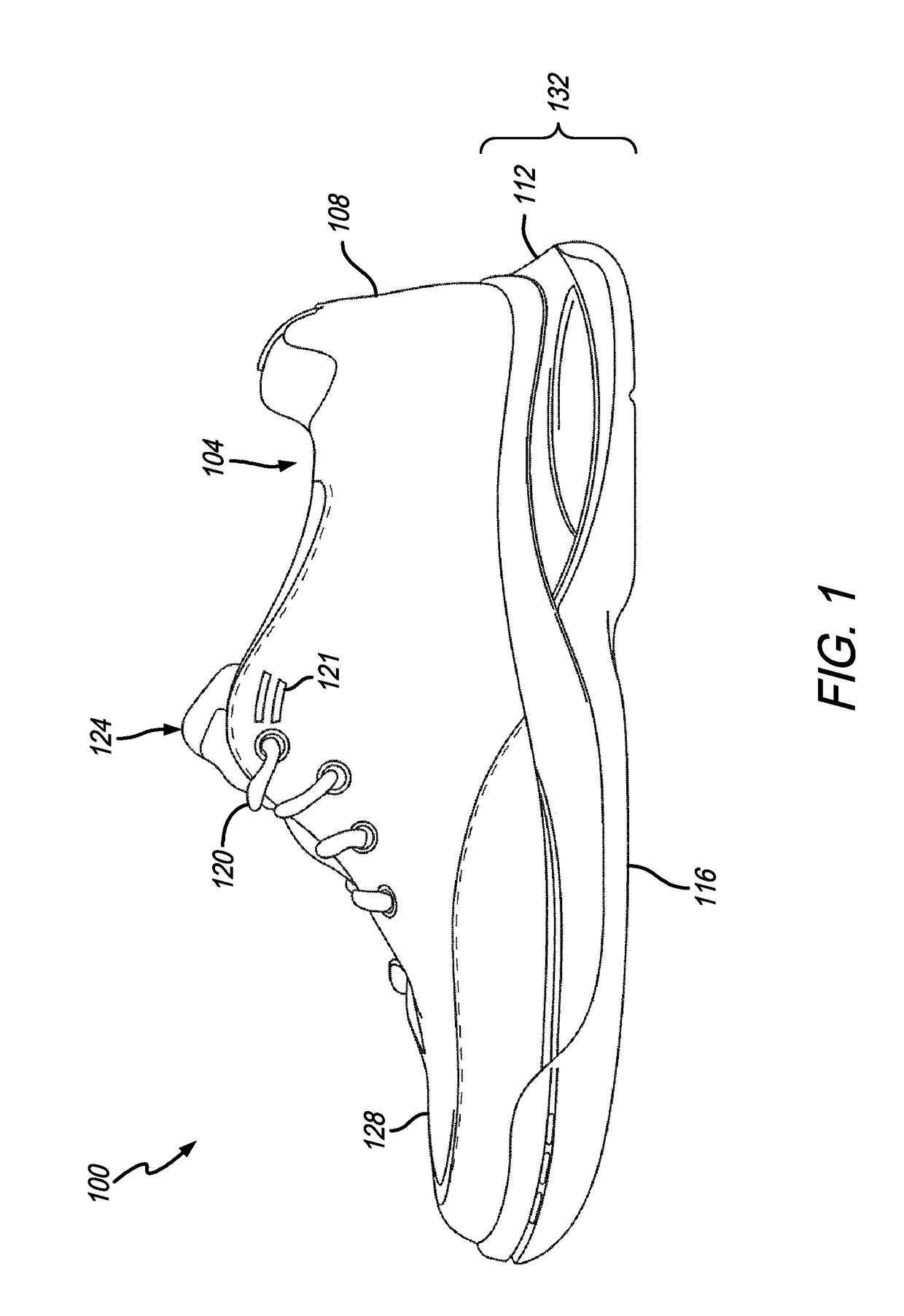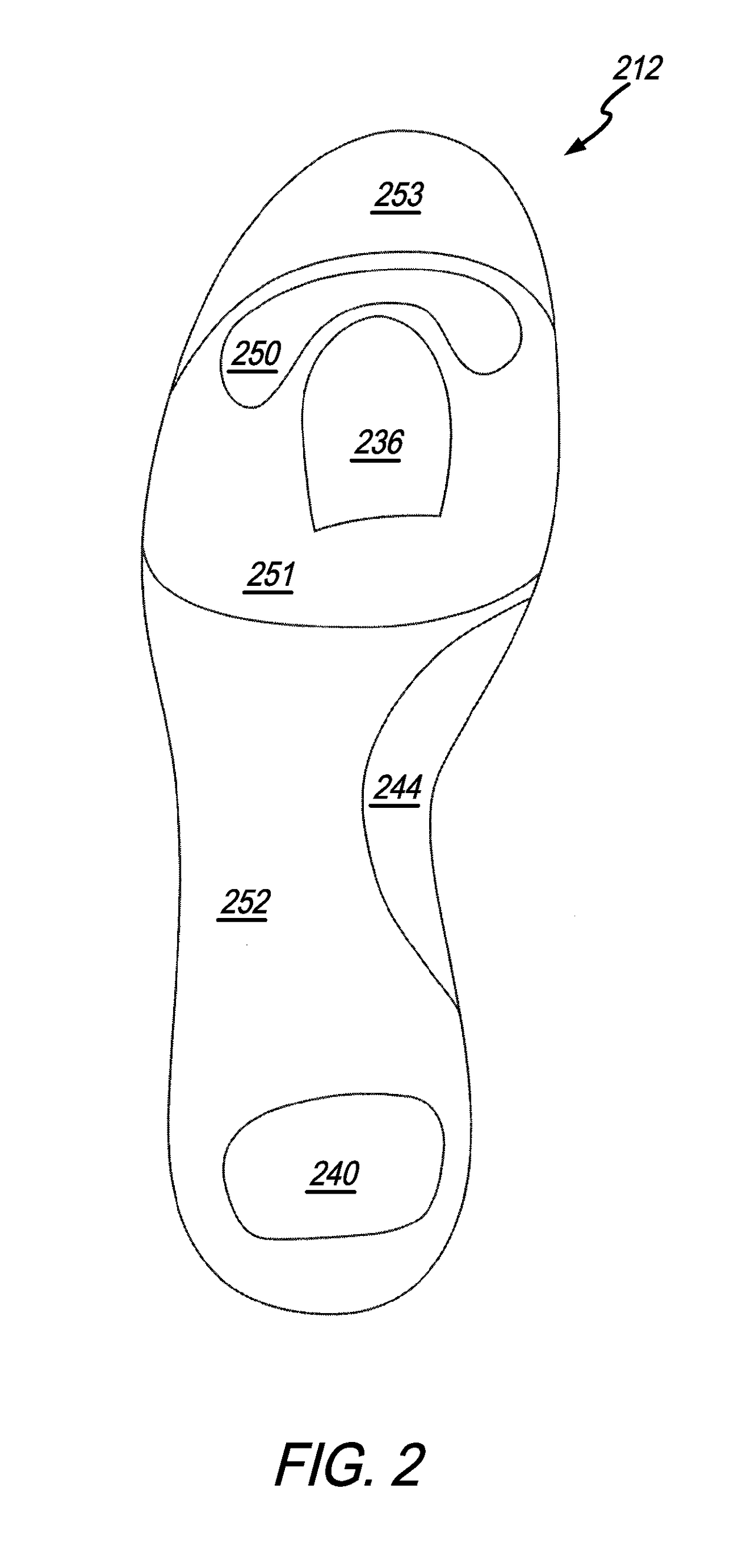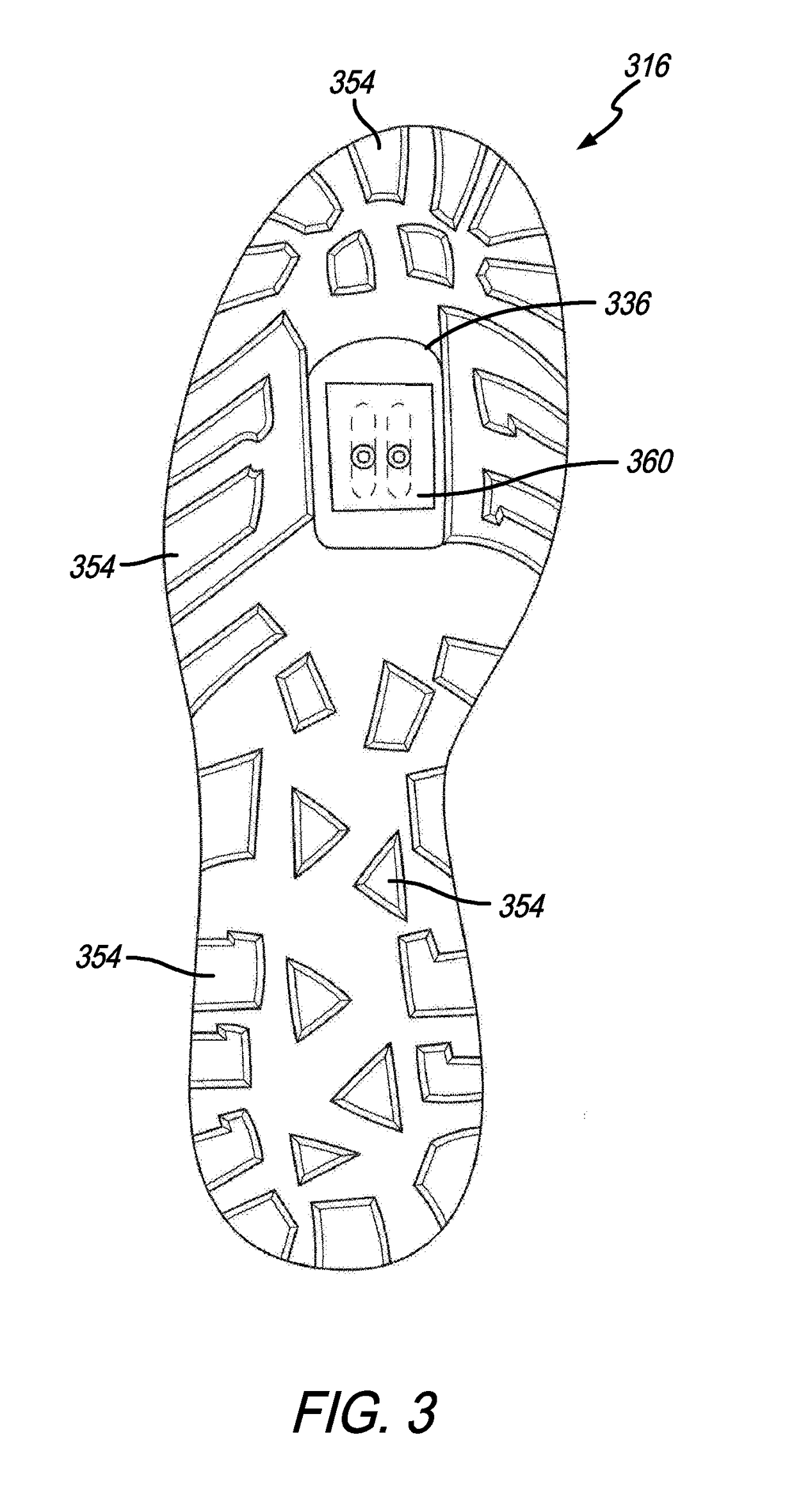Dual rigidity shoe sole
a technology of rigidity and shoe soles, applied in the field of footwear, can solve the problems of loss of energy expended, difficulty in dismounting the rider, and energy loss in compression or flexing, and achieve the effects of minimizing energy loss, efficient energy transfer, and more rigid or stiff materials
- Summary
- Abstract
- Description
- Claims
- Application Information
AI Technical Summary
Benefits of technology
Problems solved by technology
Method used
Image
Examples
Embodiment Construction
[0016]The present invention is drawn to an athletic shoe sole that provides enhanced comfort while walking and efficient energy transfer from foot to bicycle pedal when bicycling.
[0017]FIGS. 1 to 6 depict embodiments of the present invention. FIG. 1 shows a bicycling shoe 100 including an outersole 116, an upper 108, and a midsole 112 having at least two materials of different densities. The upper 108, may include a closure system 120, that can be any system capable of securing the shoe 100 to the riders' foot. The closure system may include shoelaces, a plurality of hook and loop (Velcro™) straps, zippers, and / or cords in conjunction with a dial to tighten the cords with even force across the throat of the shoe 100.
[0018]The upper 108 is attached to the midsole 112, which is attached to the outersole 116. As used throughout this specification, attachments may be made by conventional methods known in the art, such as stitching, welding and adhesive bonding. The upper 108 of the shoe...
PUM
 Login to View More
Login to View More Abstract
Description
Claims
Application Information
 Login to View More
Login to View More - R&D
- Intellectual Property
- Life Sciences
- Materials
- Tech Scout
- Unparalleled Data Quality
- Higher Quality Content
- 60% Fewer Hallucinations
Browse by: Latest US Patents, China's latest patents, Technical Efficacy Thesaurus, Application Domain, Technology Topic, Popular Technical Reports.
© 2025 PatSnap. All rights reserved.Legal|Privacy policy|Modern Slavery Act Transparency Statement|Sitemap|About US| Contact US: help@patsnap.com



